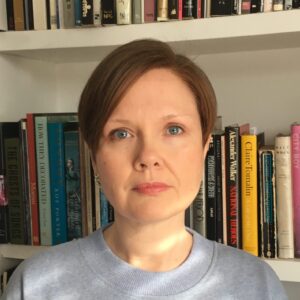In 1965, The Courtauld introduced the first academic course to be taught in History of Dress, and we therefore recently celebrated our 50th anniversary. Stella Mary Newton, who led the department, brought a rich background of couture, theatre design and art history experience to the subject, and set the foundations for its subsequent development. In 1977, Aileen Ribeiro took over and developed a strong MA course, which used visual analysis as a starting point to understanding dress history in all its manifestations – through examination of image, object and text. In combination with the History of Dress collections, which comprise rare books, fashion journals dating back to the 18th century, and the Harris Collection of Textiles, The Courtauld has a unique place within dress and fashion studies, and is committed to encouraging further innovation in this area.
Since 2009, Rebecca Arnold, Oak Foundation Senior Lecturer in the History of Dress and Textiles has led History of Dress studies at the Institute, and has integrated the subject into teaching at all levels. This is focused on the MA Documenting Fashion: Modernity, Film & Image in America & Europe, 1920-60. The course links to Arnold’s own research on the ways photography, cinema and non-fiction film connected with fashion and its evolution and representation during this period of rapid change and experimentation. This approach is extended in undergraduate courses, including Fashion & Photography: Viewing and Reviewing Global Images of Dress, which examine the ways that dress and fashion can be understood as an international industry and as an idea through a wide range of visual, material and documentary sources. This focus includes exploration of the significance of intermediality, perception, and emotional and sensory experience of dress, to create a rounded view of fashion’s meanings from designer to wearer.
The Courtauld’s faculty includes a number of academics whose research and teaching intersects with dress history, and this diversity of interests enriches our approaches to the subject. Doctoral students therefore benefit from a strong community of scholars exploring dress and textiles in relation to various art historical concerns. Robin Schuldenfrei, Katja and Nicolai Tangen Lecturer in 20th-century Modernism and Rebecca Arnold teach some seminars together, since their shared interest in fashion and modernism sparks fascinating connections. Schuldenfrei’s focus on the history and theory of European and American modern architecture and design provides wider contextualization of developments in dress of the period.
We also have a number of scholars working on earlier periods of dress and textile history, whose research and teaching expands on these discussions. Katie Scott, Professor in the History of Art, specialising in early modern French art and architecture, has a particular interest in textile design, decoration and ornament, and the relationship between works of art and their physical and social context. Caroline Arscott, Professor of 19th-century British Art, has worked on the Aesthetic movement, including examination of textile manufacture and design and her research has explored topics such as art and sexuality; body building and Victorian tattooing in relation to William Morris and Edward Burne-Jones. This interest in aspects of 19th century dress is extended by Katie Faulkner, Study Support Programme Co-ordinator and Visiting Lecturer, who works on the intersections between sculpture, dress and neo-classicism in the nineteenth century, and by Satish Padiyar, Senior Lecturer in 19th-century European Art, whose recent projects have rethought European neoclassical painting and sculpture with queer, feminist, psychoanalytic and Marxist theory and examined European Neoclassicisms through questions about the male body and notions of self.
In addition, The Courtauld is committed to examining global dress histories. This exploration includes the work of Deborah Swallow, who is a specialist of Indian textile and craft production, design and consumption, and Sussan Babaie, whose research interests include the early modern Safavid period with topics on urbanism and empire studies, on sexuality and social habits of ‘seeing’, and on notions of exoticism and transcultural visuality.
